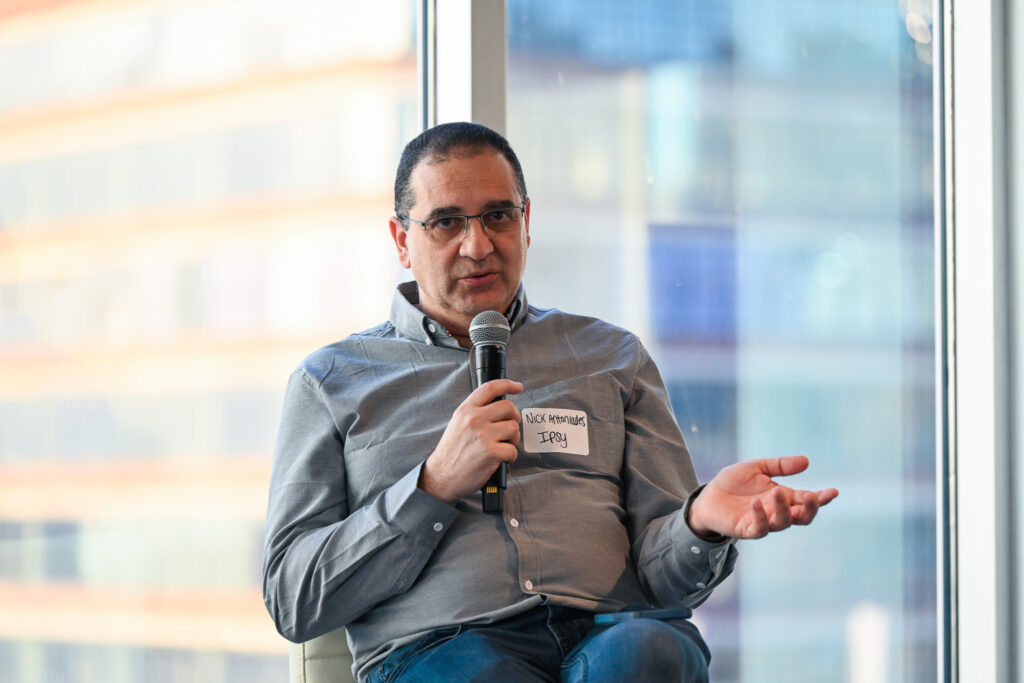The future of retail is going to require a new focus on customer experience and expectations that have been reshaped by the pandemic. Merchants trying to adapt to the future of omnichannel retail will have to adopt a healthy helping of technology to enable data-driven marketing and personalization, but also need a reality check on new tools such as artificial intelligence, said speakers at Brand Innovators’ Evolution of Retail and Commerce Summit.
“The pandemic forced innovation onto consumers,” said Jake Avdiev, head of consumer marketing and strategy at Amazon Fresh. Consumers embraced online shopping during lockdown as a safe and convenient alternative to shopping in person. Typically, innovation is organically introduced to meet consumer needs or ushered in via environmental factors or external events. However, barring an outside event driving change—like the pandemic—innovation should not be forced onto consumers. “Retailers shouldn’t simply push technology for its own sake,” he warned.
Companies like Amazon that “embrace optionality” and place an emphasis on customer obsession tend to succeed in the industry. Whether it is a fully grab-and-go store, self-checkout with smart carts or a full-service cashier checkout, a great store format caters to the preferences of the shopper, said Avdiev. Omnichannel retail needs to meet shoppers where they are at and give them choices, letting them pick and choose their experience online or in real life, said other speakers.

Keri Taub, VP of business strategy at Bloomingdale’s
Retailers only adapt to how consumers behave, said many speakers. The pandemic led to an accelerated adoption of online shopping and shop-online-pick-up-in-store retailing, but as the lockdown moves into the history books, shoppers are prioritizing the store experience again, while still demanding a higher level of service online.
“The pandemic hit people over the head with the sense that shopping is not a means to an end,” said Keri Taub, VP of business strategy at Bloomingdale’s. The end of the pandemic restrictions left consumers with a desire to be out and around others, which created opportunities for retailers to recreate the in-store experience. Bloomingdale’s, for example, has experimented with multiple store formats that match the profile of shoppers that patronize a certain store, ranging from large-format stores geared towards discovery to smaller stores focused on one demographic—such as an all-women’s assortment—or towards fulfilment of online orders and replacement purchases.
“First and foremost, we have to give the customers what they want,” said Taub.
The stores have to “make hard choices” because the goal becomes not doing everything OK, but picking spots and exceeding expectations there, she explained. The product itself is not the sum of what the department store is selling, she said. The experience counts. Amazon has shown that a merchant can optimize every aspect of fulfillment, and not make the customer happy: “One plus one doesn’t always equal two in the way that you think,” she said.

Carina Ertl, chief marketing and digital officer of Tourneau Bucherer
Balancing technology
Merchants are now challenged with growing their customer base and balancing technology and experience to provide those customers a brand experience across digital and brick and mortar channels. Data shows shoppers want to shop both online and offline channels, so merchants need to make that transition seamless, said Marina Sukhova, head of customer experience at L’Oreal.
Shoppers will start at different points of the customer journey, which has become more complex in terms of the variety of scenarios marketers have to think about, so personalization becomes more important, she said.
Even in the luxury arena, digital channels are now more important. Carina Ertl, chief marketing and digital officer of Tourneau Bucherer, noted 80% of the watch retailer’s clients come to the store having had previous touch points elsewhere. Tourneau needs to know what those are and use them to improve the experience; bridging that store/digital divide is a crucial task, she said.
“We need to become more personalized; we need to make sure our content is more authentic,” Sukhova said. Brands need to create multiple scenarios to communicate with different shoppers. The history of branding is repeating the same message, but in this fragmented, personalized world, brands need to consider this new trend of multiple scenarios and the technological challenge of creating content that fits each platform, she said.
The promise of artificial intelligence helping this effort is resonating with retailers.
AI is making things better in consumer marketing by personalizing messages and giving marketers more relevant information on their customers, said Michele Calhoun, head of consumer health & wellness at online drugstore GoodRX.

Nick Antoniades, VP of marketing at makeup retailer Ipsy
But many speakers also warned about using AI as the proverbial hammer, and seeing everything as a nail that needs pounding. AI is a tool, but its uses are limited, said Nick Antoniades, VP of marketing at makeup retailer Ipsy. It can help content creation and personalization—“How many of you are willing to test 20 (email) subject lines?” he asked—but it can’t replace human curation.
“It will not come up with the unexpected,” he said.
When it comes to AI, the industry is somewhere between “surreal optimism” and caution, said Chris Orr-Van Abbema, VP of product management at agency Huge. “It’s completely transforming the way that we deliver and the experiences themselves,” he said.
The technology is “a huge accelerator”—he noted how Huge’s staff was able to do a site rebrand for a client drastically faster by using AI—but it’s important to temper expectations for what it can do. He warned about AI hallucinations possibly harming brand equity by sending the wrong message. He explained that marketers need to be purposeful in using the right brand moments to train AI and putting the right guardrails in place to train agents in brand tone.
“It’s not a magic tool for everything, but it can be a tool for many situations,” he said.
Another tool experiencing a surge is retail media networks, but that development also brought up some caveats among speakers at the Summit. They cautioned that retailers need to balance their growing networks, which open new revenue opportunities and a way to monetize the customer base, while looking out for risks to vendor relationships and the customer experience.
These pressures create tensions between growing that media channel, the store experience and relationships with vendors, said John Giaquinto, VP of loyalty personalization and analytics at Rite Aid. These functions are often managed by different internal teams that will need to negotiate and sync their priorities for the RMNs to succeed, said Giaquinto. “There’s enough competition outside retailers to compete within,” he said.
Done right, an RMN allows smaller brands that didn’t have the scale to communicate with consumers to get in front of shoppers, said Sarah Crockett, CMO of shoe retailer DSW, which is launching its own Retail Media Network. That can strengthen the relationships between a retailer and the brands it carries, said Crockett.
“The primary part of the equation is to strengthen the relationship with vendors,” she said. “Financial benefits need to work too, but the relationship is most important… to ensure vendors can break through and create a unique messaging opportunity.”
The effort can go sideways if it compromises the integrity of the brand, she warned. Done wrong, it can dilute the DSW brand by letting partners take over the DSW storytelling in-store, she said.
Making a retailer stronger and building better customer relationships is the goal, said Giaquinto, who called retail media networks “a work in progress.” He warned retailers diving into media networks to not take their eye off the ball.
“You can be a successful media company surrounded by a weak retailer,” he warned. “You don’t want to do that.”




